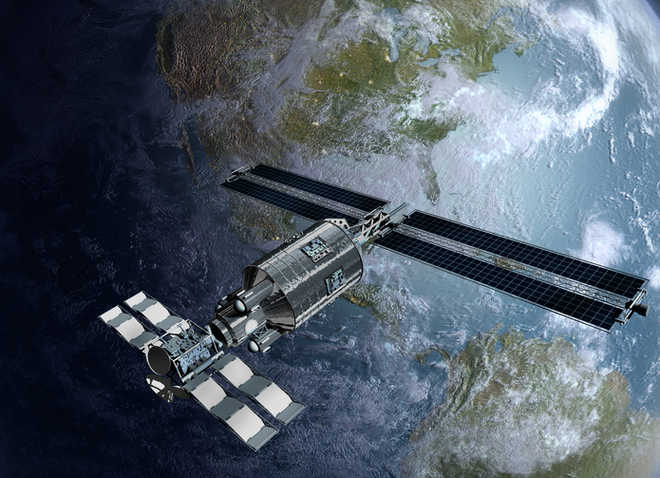
Titan like exoplanet atmosphere mapped
Titan Like Exoplanet Atmosphere Mapped A Breakthrough in Comparative Planetary Science
In a historic stride for astronomy and exoplanet research, scientists have successfully mapped the atmosphere of a distant exoplanet that bears a striking resemblance to Titan, Saturn’s enigmatic moon. Using data collected by the James Webb Space Telescope (JWST), a team of international researchers was able to analyze the chemical composition, temperature gradients, and dynamic weather patterns of this alien world, officially designated HD 189733c, located approximately 64 light years from Earth. The results have astonished scientists and ignited widespread interest in the prospects of discovering life supporting chemistry in the cosmos. The exoplanet’s thick, hazy atmosphere rich in methane and other hydrocarbons mirrors many of the unique features of Titan, suggesting that similar processes could be occurring well beyond our solar system.
Titan has long intrigued scientists as a body in our solar system that, despite its frigid conditions, exhibits Earth like atmospheric behaviors such as weather cycles, seasonal changes, and complex organic chemistry. The discovery of an exoplanet with such comparable characteristics opens an entirely new chapter in planetary science. Researchers believe that understanding Titan like worlds could help decode the diversity of planetary atmospheres and offer valuable clues about how prebiotic chemistry the chemical steps leading toward life might develop in environments vastly different from Earth’s. The successful mapping of HD 189733c’s atmosphere has thus become a focal point in the growing field of exoplanet climatology.
The mapping process relied heavily on a technique called transmission spectroscopy. As the exoplanet passed in front of its host star an event known as a transit light from the star filtered through the planet’s atmosphere. The JWST’s spectrographs captured this starlight, which became slightly altered depending on the chemicals present in the atmosphere. Specific gases absorb specific wavelengths of light, and by analyzing these absorption lines, researchers were able to determine the presence of methane (CH₄), ethane (C₂H₆), hydrogen cyanide (HCN), and other complex hydrocarbons. Additionally, the atmosphere exhibited a photochemical haze, similar to the one that gives Titan its dense orange hue.
The results show that the exoplanet’s atmosphere is dominated by thick layers of hydrocarbons, suspended in multiple stratified levels, indicating ongoing chemical processes possibly driven by ultraviolet light from its star. Unlike Titan, which orbits Saturn at great distance from the Sun and maintains temperatures far below freezing, HD 189733c is located much closer to its star. Consequently, it experiences higher atmospheric temperatures, yet retains a surprisingly stable structure that supports haze formation. This unexpected stability in a high energy environment challenges existing models of atmospheric dynamics and suggests that Titan like conditions may not be exclusive to the cold outer regions of planetary systems.
What makes this discovery particularly fascinating is the detection of a potential methane cycle, a process similar to Earth’s hydrological cycle. The data hints at updrafts, condensation zones, and possibly even precipitation though in this case, any “rain” would consist of methane or ethane droplets. These findings mirror the methane cycle on Titan, where lakes, clouds, and storms have all been observed. If confirmed in follow up studies, the presence of such a cycle on HD 189733c could imply a broader universality of chemical weather systems in exoplanetary environments. This, in turn, could have implications for astrobiology, particularly regarding the stability of environments that support complex organic interactions over long timescales.
Beyond the chemical composition, the JWST’s detailed mapping also revealed significant insights into the planet’s temperature distribution and atmospheric circulation. HD 189733c exhibits a notable day night temperature contrast, suggesting a tidally locked orbit where one side of the planet perpetually faces the star, and the other remains in darkness. High speed winds were inferred from the movement of heat across hemispheres, leading scientists to hypothesize the presence of jet streams and perhaps even vortexes similar to the polar systems observed on Jupiter and Saturn. These dynamics further emphasize the complexity of exoplanetary atmospheres and the importance of continued observation.
The implications of mapping such a Titan like exoplanet are vast. From a technological perspective, it showcases the power of the James Webb Space Telescope and the exponential growth in our ability to study distant worlds. Just a decade ago, the idea of discerning atmospheric details of exoplanets was largely theoretical; today, scientists are analyzing chemical fingerprints and weather systems light years away. From a scientific standpoint, HD 189733c offers a rare opportunity to test models of planetary formation, atmospheric retention, and climate evolution in a context far removed from Earth centric assumptions. It underscores that planetary similarity is not confined to physical appearance or orbit, but may extend into functional processes and behaviors.
Of course, many questions remain. While the planet’s atmosphere is chemically rich, it does not necessarily indicate habitability in the traditional Earth like sense. Its high temperatures and lack of liquid water make the presence of known life forms unlikely. However, the conditions may still support exotic forms of chemistry that mimic the early stages of life building reactions. Some scientists propose that understanding these reactions in methane rich environments could help researchers explore alternative biochemistries potentially broadening the definition of habitability in future planetary assessments. The planet could serve as a natural laboratory for studying how life like processes begin in extreme, non Earth environments.
In conclusion, the mapping of a Titan like atmosphere on HD 189733c marks a monumental achievement in exoplanetary science. It affirms that the characteristics once thought unique to Titan a dense hydrocarbon atmosphere, active weather patterns, and organic haze layers can exist elsewhere in the universe, even under radically different temperature and orbital conditions. The discovery expands the frontier of what we consider possible in planetary diversity and fuels optimism about discovering even more complex worlds in the near future. As the JWST continues to scan the cosmos, and as next generation telescopes prepare to come online, humanity edges closer to understanding its place in the galaxy not just through the search for Earth analogues, but through the exploration of worlds that, like HD 189733c, are alien yet astonishingly familiar.











